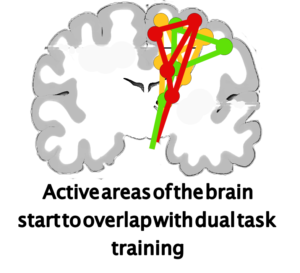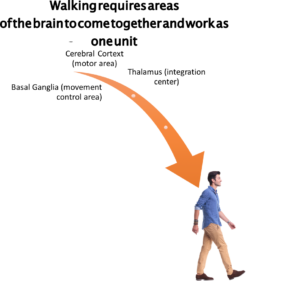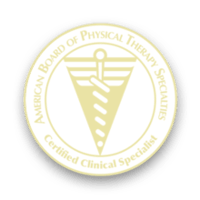A stroke is the leading cause of long-term disability. Neuroplasticity (the brains ability to reorganize) is the foundation of regaining movement, and ultimately independence. This requires repetitive practice, of the correct movements, performed in the right context. Dual-task exercise training is one way to structure rehabilitation activities to maximize motor learning and minimize long-term disability. This type of training is extremely effective in re-learning motor skills such as getting in and out of bed, standing, walking, reaching, stair climbing, and stepping in and out of the shower…..just to name a few 🙂
What is dual-task exercise training
Dual-task exercise training is when two activities are performed at the same time. In most cases, a motor skill (for example, walking) is combined with a cognitive (thinking) activity.
This is in contrast to single-task training. Single-task training focuses on repetitive practice of a single activity. In this type of practice, thinking challenges, are removed. This is helpful at the beginning stages of learning a new skill. However, single-task training is NOT effective in long-term skill acquisition (learning a new skill).
How is a motor skill performed in a healthy brain?
A motor skill requires more than just the “motor” area of the brain. In addition to the cerebral cortex (motor area), the thalamus (an integration area), and the basal ganglia (fine tunes movement) are also involved. These brain areas “talk” to each other to “map out” the desired movement. Stated another way, a desired movement (motor skill) integrates multiple areas of the brain.
How does dual-task exercise training encourage neuroplasticity?
Neuroplasticity (in the case of stroke recovery) is the brains ability to form new connections (axonal sprouting). Axonal sprouting is more likely to occur when the brain regions are encouraged to communicate with each other. Dual-task training is one way to encourage this interaction between multiple brain regions (integration).
Why is dual-task exercise training effective?
Let’s use an example (of a motor skill) that many can relate to, walking. Walking, in itself, requires multiple brain regions to communicate with one another.
Now, lets add a cognitive (thinking) task. For instance, counting down from 100………..by multiples of 4. ![]()
And before you ask, yes, the counting must occur at the same time as walking. 🙂 And yes, I know, counting may be harder than the walking. That is the point…..sort of. Remember, this is just a hypothetical example. But back to the point. So, what exactly is going on in the brain as all this walking and counting is going on? Your brain is on over drive. Firing signals from one end to the other for two completely opposite tasks. So what do you think happens as these signals are firing across the brain?……….Magic. ![]() Ok, maybe that is a little overly dramatic. But seriously, it is pretty cool.
Ok, maybe that is a little overly dramatic. But seriously, it is pretty cool.
The neurons that are required for each activity are now starting to overlap, creating a STRONGER signal (in the overlapping areas).
 In other words……”you get more bang for your buck”
In other words……”you get more bang for your buck” ![]()
Ok, now that the excitement is winding down (from this mind-blowing idea) of dual-task training, lets get to the fun part. Some examples of dual-task exercises that can improve walking.
Dual-task exercise training ideas
Instead of just walking, try combining walking with….
- Talking (that requires thinking): for example, recite the alphabet backwards, count by multiples (for example 3,6,9,12….etc)
- Carry an empty cup
- Carry a cup with water: this requires thinking to make sure you do not spill the water
- Toss a ball from one hand to the other
- Bounce a ball
How can a physical therapist help with dual-task exercise training?
A physical therapist is skilled in assessing movement, and selecting the most appropriate activity. An appropriate activity (that promotes positive neuroplasticity) are those that can be performed successfully. An activity that is too difficult will lead to compensation, and the risk of NEGATIVE neuroplasticity. It is also true that if an activity is too easy, positive brain changes may not occur.
A physical therapist is also skilled in manual facilitation strategies. A therapist will use these techniques to “normalize” movement as you perform these activities. It is important to note that the brain is creating connections based on the quality of the movement. Practice abnormal movement patterns, and that is ultimately going to become the body’s “new normal”.
This is definitely a mode of training that you (and your therapist) can have some fun with. If you have any questions, please don’t hesitate to comment below or shoot me an email. I love, love, love brain storming and problem solving to help YOU get your independence back!





